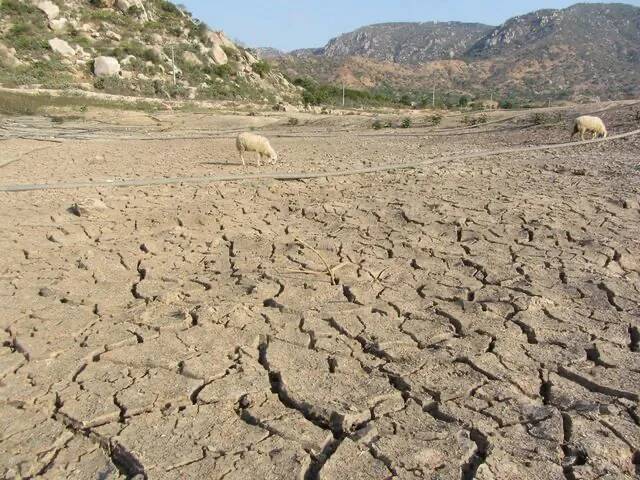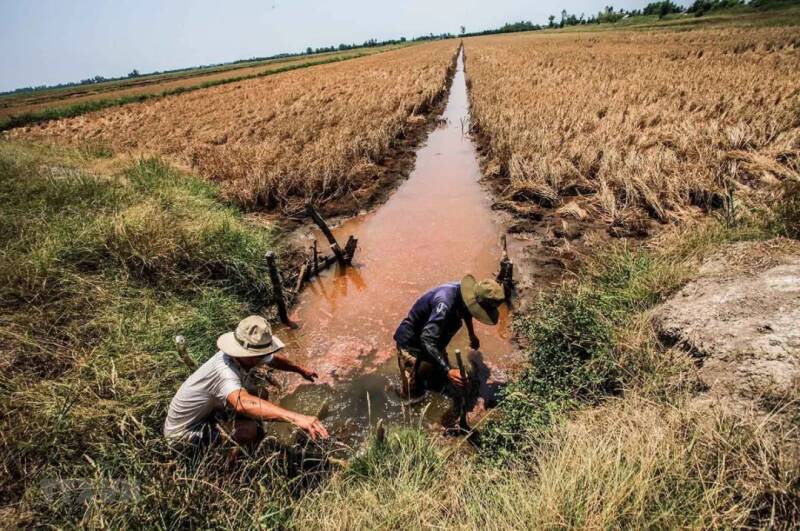Level 2 drought warning! Severe drought in coffee producing areas may push up coffee bean prices further
Recently, the prices of both Arabica coffee and Robusta coffee have been rising in the international coffee market, due to the severe drought in Vietnam, the second largest coffee producer in the world, which has led to a decrease in the production of Robusta coffee in that country. it has also led to a reduction in global coffee stocks.

Recently, according to a report by Vietnam's National Hydrometeorological Forecast Center, a second-level drought warning has been issued to five provinces in Vietnam, including Quang Ji, Quang Yi, Binh Jun, Fu'an and Calais, and warned of possible natural disasters in these provinces.
In addition, over the past period of time, the total rainfall (TLM) in the central and central highlands of Vietnam is on the low side. The rainfall in the central region is 10-20 mm lower than the average rainfall in the same period of many years, and the rainfall in the central highland is 30-70 mm lower than the average rainfall in the same period of many years.

Apart from the reduction in rainfall, the water level of the rivers in the central region has changed slowly, with the water level of some rivers falling to an all-time low. For example, the water level of the S ô ng Vu Gia River in Guangdong Province is only 1.41m, an all-time low. The water level of the S ô ng Autumn Basin River, also in Guangdong Province, recorded 0.47m, with a low and lowest water level of 0.09m.
In addition, the water level of the Mekong River, the longest river in Southeast Asia, has fallen seriously, breaking the lowest record since 1926, resulting in serious drought and land salinization in Vietnam.
The decline of water level, drought and salinization of land have led to a crisis in agricultural cultivation such as coffee in Vietnam. Originally in April, it was the flowering season for Vietnamese coffee, but the coffee plants withered and the leaves turned yellow due to severe drought and high temperatures.
Moreover, as rainfall in many areas is still low and irregular, it is still in a state of drought, and many lakes and streams have dried up, so there is a lack of water for irrigation. Coffee production in some areas could be damaged by as much as 30% and 50%, according to data released by the Vietnam Coffee and Cocoa Association. It is predicted that coffee production may be 20% lower than the previous year's 1.84 million tons, while exports will also be down 20% from 1.67 million tons in the same period last year.
This has caused local coffee prices in Vietnam to soar, with local purchase prices reaching 120 million dong (about 34000 yuan) per ton, with prices rising by as much as 250% in the past year. The crazy rise in coffee prices has made local coffee traders face the crisis of bankruptcy. The industry believes that the continuation of such high prices will be a great challenge to the traders' capital chain, especially for some small and medium-sized traders.
In addition, such high prices put local traders in a dilemma, because if the sale price does not rise, they will face losses, but if the price rises too high, they may lose customers and reduce sales.
In the face of the current drought, the Weather Forecast Center predicts that it will improve by the end of April, but the rainfall is still not enough to alleviate the current predicament. In addition, due to the high probability of the return of La Nina weather in the second half of the year, there may be heavy rainfall or flooding, so preventive measures need to be taken to avoid further effects.
Important Notice :
前街咖啡 FrontStreet Coffee has moved to new addredd:
FrontStreet Coffee Address: 315,Donghua East Road,GuangZhou
Tel:020 38364473
- Prev

Panama| Introduction to Rose Coffee Beans in Poquet Coffee Region
Panama There is a country in the southernmost part of Central America with a special geographical location and canals in its territory are known as the "Bridge of the World." It is The Republic of Panama. The country's total area is 75517 square kilometers, divided into 10 square kilometers nationwide.
- Next

Why are all the expensive and good coffees on the market sour? How do Blue Mountain and Rose Summer Coffee iterate? What determines the sourness and bitterness of coffee?
I remember last year, a well-known blogger went to a coffee shop to experience the sky-high price of hand-brewed coffee. As a result, he put on a mask of pain because he tasted sour coffee for the first time. As a result, for a while, there were rumors about sour coffee. Among them, one comment sparked heated debate: "Most coffee nowadays is
Related
- Being chased out of the rain in front of Starbucks?! Store: Sheltering from rain under umbrellas poses a safety hazard
- The white moonlight has changed?! Lucky launches "Big Winter Pear American"
- Hand-brewed coffee three-stage method, high-sweet and universal brewing method to share! What does the high sweet water level of hand-brewed coffee mean?
- What is the difference between raw, refined and full espresso coffee? How to extract espresso and taste good?
- A complete list of coffee bean names and their meanings! What is Yejia Shefi coffee? Where is Mantelin coffee?
- What grade does Arida Manor Kaduai coffee beans belong to? What treatment is Arida ASD slow anaerobic sun exposure?
- The milk tea cup becomes smaller?! Overlord Tea Girl launches a new "Return to Yunnan" series
- Accused of selling counterfeit and high-priced coffee beans! Well-known boutique coffee brand "Oukelao" bowed and apologized!
- How to make espresso dumplings? Can I eat coffee and glutinous rice balls together?
- Save the unformed and stagnant powder cakes in one second! What is the problem with stagnant water in the powder bowl of the espresso machine?

